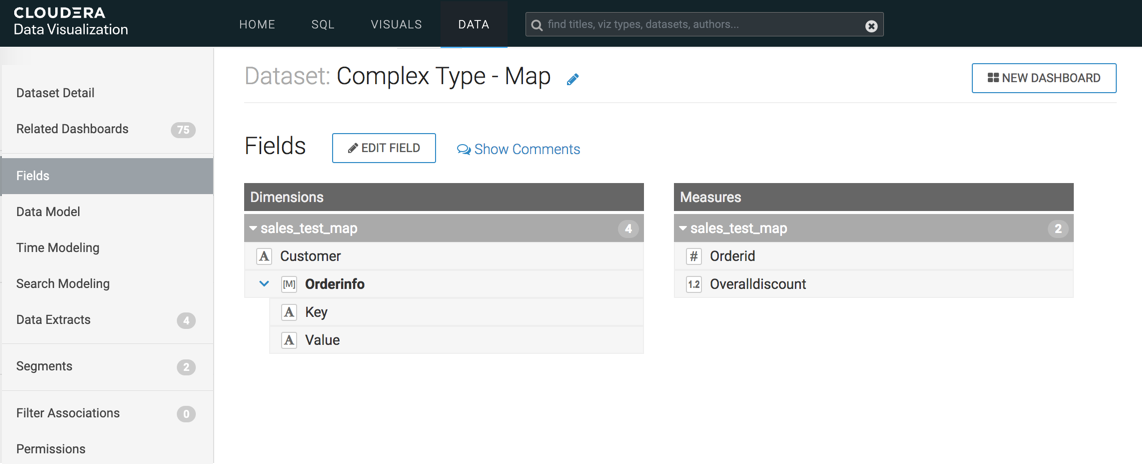MAP data type
This article describes the specifics of the MAP complex data type.
Syntax for MAP
column_name MAP < primitive_type, type > type ::= primitive_type | complex_type
MAP data types represent sets of key-value pairs. These collections
have an arbitrary number of elements, with each element being the same type. A
MAP type is similar a miniature table, the table equivalent of
scalar (primitive) values with two columns.
- KEY
-
-
A scalar type, such as
BIGINT,STRING, orTIMESTAMP -
It enables you to define non-continuous sequences or categories with arbitrary names.
- Keys in a map column may represent a numeric sequence of events
during a manufacturing process or
TIMESTAMPvalues that correspond to sensor observations. -
Access as
map_name.key.
-
- VALUE
-
-
The second part of a key-value pair in a map.
-
May be a scalar, or another complex type (an
ARRAY, aSTRUCT, or anotherMAP). -
Access as
map_name.value. -
If a map contains a
STRUCT, access asmap_name.value.field_name, or asmap_name.field_name.
-
MAPs in the Dataset Fields interface
In the Dataset Fields interface, an example of a basic
MAP data type may look something like the following image. Each
level of a complex data type can be expanded to show component details, or
collapsed.

In the example of the dataset Complex Type - Map, you can see the following:
- Dimension
Customer (a
String, symbolized by A) - Measures
Orderid (an
Integer, symbolized by #) - Overalldiscount (a
Real, symbolized by 1.2)
These are primitive types. However, Dimension
Orderinfo is a Map data type, symbolized by [M].
When you click Edit Fields, you can see that:
- Primitive types can be cast as alternate data types (such as Integer into Real).
- Complex data type Array cannot be changed to another type.
- Primitive components of the array may be cast as other primitive data types.
- Cloudera Data Visualization uses complex datatypes only as Dimensions. They or their components cannot be redefined as Measurements of the dataset.

MAPs in visuals
When building a visual with complex data, you cannot use the complex type directly. However, you can add the primitive components of the complex type to the shelves of the visual.
Changing field properties
Changing field properties for a component of a complex data type is straightforward. You can change the aggregation function, type, display options, and so on, just like a standalone primitive type field.
MAPs in Expression Editor
The expression editor supports the full use of MAPs, both in the Dataset and Visual interfaces.


